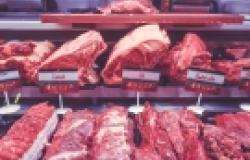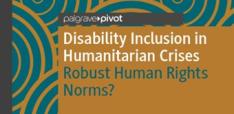Growing the Future of Food Security: Is In Vitro Meat all Peril and No Promise?

“No animals required” really means that consumable food without the need to raise and kill animals is not only a distinct possibility, but also that cultured meat could be available in supermarkets sooner than people think.
There is little doubt that the idea of producing, selling, and consuming in vitro meat (IVM) – produced through the use of tissue engineering – is both fascinating and exciting for many people. Allured by the idea of saving money, consumers could be easily sold on such products. Others, more interested in ethical and environmental concerns and impacts will not only form the basis of a tougher market to gain traction into, but likely also a source of opposition to the idea of IVM as an intricate part of the future of food and food security.
Worries about the use of IVM have contributed to a budding debate on the use of animal-less meat for meeting future sustenance demands of a growing world population expected to reach almost 10 billion by 2050. Much criticism has been brought against conventional farming methods, including the use of environmental resources, the impact on land and water resources, and the subsequent effects of greenhouse gas (GHG) emissions and pollution levels that could catapult past acceptable levels established through climate change agreements.
However, IVM could be a welcome addition to world food sources, particularly with the amount of CO2 emissions currently produced by large-scale, mechanized farming. In China, for example, the use of fertilizer for healthy maize yields accounts for 41% of all emissions – 2.2 t/ha of total carbon emissions in the production of maize. IVM does not require the same level of commitment to raising animals from birth to slaughter. Cultured meat has a strong Earth friendly side. Hanna L. Tuomisto and M. Joost Teixeira de Mattos’ study, published in Environmental Science and Technology, showed that:
[i]n comparison to conventionally produced European meat, cultured meat involves approximately 7–45% lower energy use (only poultry has lower energy use), 78–96% lower GHG emissions, 99% lower land use, and 82–96% lower water use depending on the product compared.
In addition, there is a greater level of control in IVM production as opposed to its natural counterpart, which has been the source of such fatal diseases as Bovine spongiform encephalopathy (BSE) or simply Mad Cow Disease. Since IVM production is a process in which the raising of animals is eliminated, there is also less need to produce food for animals intended for slaughter. Thus, IVM could lessen the strain on food production because meat can be created in a laboratory rather than traditionally produced.
To animal activists delight, animal rights then become less of a concern because there is no animal to care for. Consequently there is no animal to harm in the overall production process, since the process involves the reproduction of cells. Cultured meat could therefore lead to a broadening of food choices for people, and providing them with an alternative to meat that comes from factory farms. We might even say goodbye to the “Free Range” movement since there would be no chickens to cage. “Free Range” and “Cage Free” animals are also subjected to the same conditions as battery-cage chickens, for example, during transportation. They are typically sent to the same slaughterhouses that are used by factory farms.
The debate over IVM also requires one to revisit the morality of what is called humane killing, on which much discussion tends to center on the pain involved in killing. Jeff Johnson examines the convenient “moral cover” under which people tend to hide when turning to factor farm alternatives. This raises concerns over the existence of farms and farming practices in which animals like chickens and livestock are treated with respect, cared for, and fed healthy and organic food. The decline of ethical farms could lead to the rise of less or completely unethical farming practices. Would fake meat, as it becomes cheaper, get into an economic war with real meat for example.
Contrary to the efforts of animal rights activists there are no humane or ethical ways to kill, but IVM offers an alternative to the predicament of trying to justify the mass-slaughter of animals in an ethical way. We might also see the slaughter of animals for the purpose of feeding a constantly growing population as the justification for IVM use in that we owe it to the animals after decades of killing in this way.
Although IVM currently includes an animal-derived element, Dr. Nicholas Genovese told the Institute for Ethics and Emerging Technologies (IEET) that, ‘progress has been made in this direction and is expected to continue until animal-derived components are eliminated’.
People moving overwhelmingly in the direction of IVM consumption, as a replacement for non-cultured meat, could signal a detachment with humans’ natural development. Such a separation with nature builds on the argument about disrespecting nature and the animals within it. There is little room for contesting that a plant-based diet is healthy, but a diet that involves few plants and lots of IVM signals the dangerous crossing of a line that sees humans moving away from nature and what made humans what they are today.
The overuse of antibiotics in the meat industry has also given rise to major concerns by professionals and the general public that antibiotic-resistant superbugs are on the rise. For over half a century antibiotics have been used to great effect in reducing illnesses and deaths among the world’s population, however, its overuse is a crisis-in-the-making. ‘The extensive use of antimicrobial drugs’, noted the Interagency Task Force on Antimicrobial Resistance (ITFAR), ‘has resulted in drug resistance that threatens to reverse the medical advances of the last seventy years’. This represents a major public healthy issue.
Indeed, IVM production still incorporates the use of antibiotics. Despite its attractive up-sides of having no saturated fats and no growth hormones, among many others, IVM is still requires antibiotics but far less than livestock farming. The United States (US) Food and Drug Administration (FDA) recently reported that the ‘medically important antimicrobials necessary for the growth of healthy animals for human consumption constitutes approximately 72% of antibiotic sales within the US’.
Yet, if meat were to be fully created in a lab, where conditions are entirely under the control of lab technicians and scientists, it might be the best step forward in the reduction and even elimination of antibiotics in the meat industry. In other words, the aseptic conditions of laboratory are enough to prevent the spread of diseases. This means worrying about and seeing less of diseases like Avian Flu and Swine Flu.
IVM production is not limited to producing items like chicken meat and beef, but also exotic meats. Thus, it could also help dismantle the black market for such meats and reduce the chance of consumers falling foul of dangerous retroviruses.
In a February 17, 2017 article published in The Conversation, Clive Phillips and Matti Wilks discussed reactions to artificial meat using data from a poll published in PLOS One. It showed the people are generally open to trying IVM over real meat. Much of the aversion could be based on the newness of IVM and the rumor mill that IVM is somehow dangerous. Thus, there remains work to be don ‘selling’ the positives of IVM. Nonetheless, it is notable that the data showed that the majority of people are likely to begin incorporating a mix of IVM and real meat into their diets.
The future of food security could be dependent on our willingness to consume IVM. Coupled with the view that organic food alternatives, including “cage free” and “free range” exists beyond the budgets of many, and that IVM feeds positively into counterarguments about the perils of cultured meat, it is necessary to push the positives of IVM and look beyond negative misconceptions.
Scott N. Romaniuk is a Doctoral Researcher at the School of International Studies, University of Trento. Tobias J. Burgers is a Doctoral Researcher at the Otto Suhr Institute, Free University Berlin.
Photo credit: <a href="http://foter.com/re/348af8">Foter.com</a>


